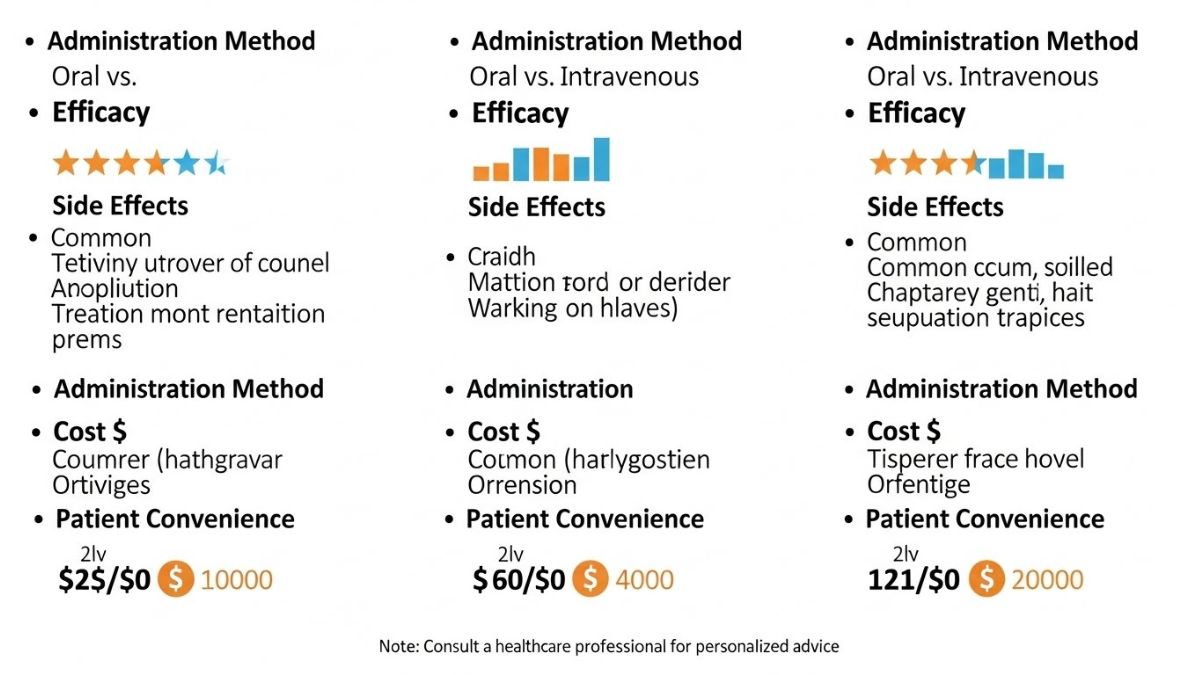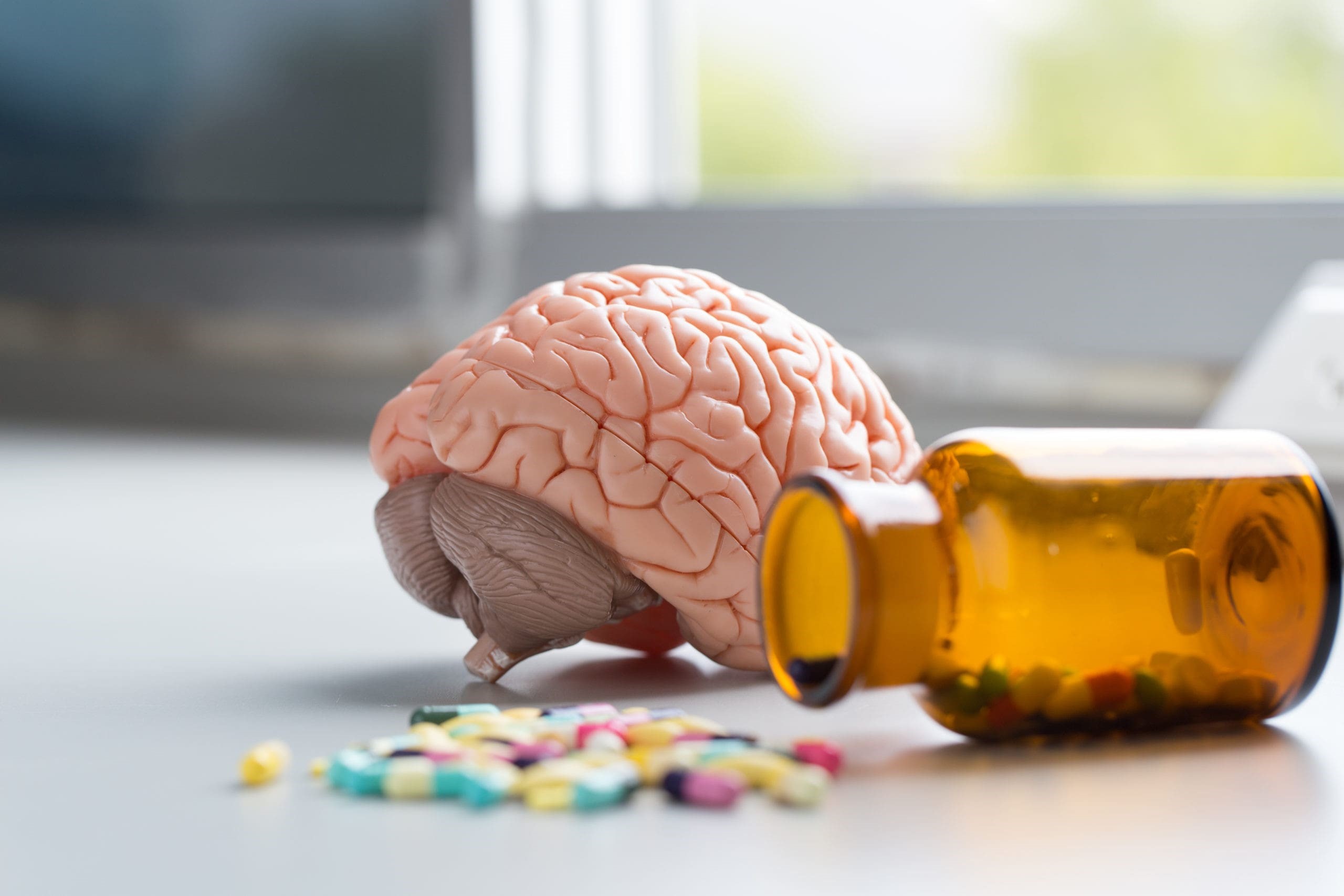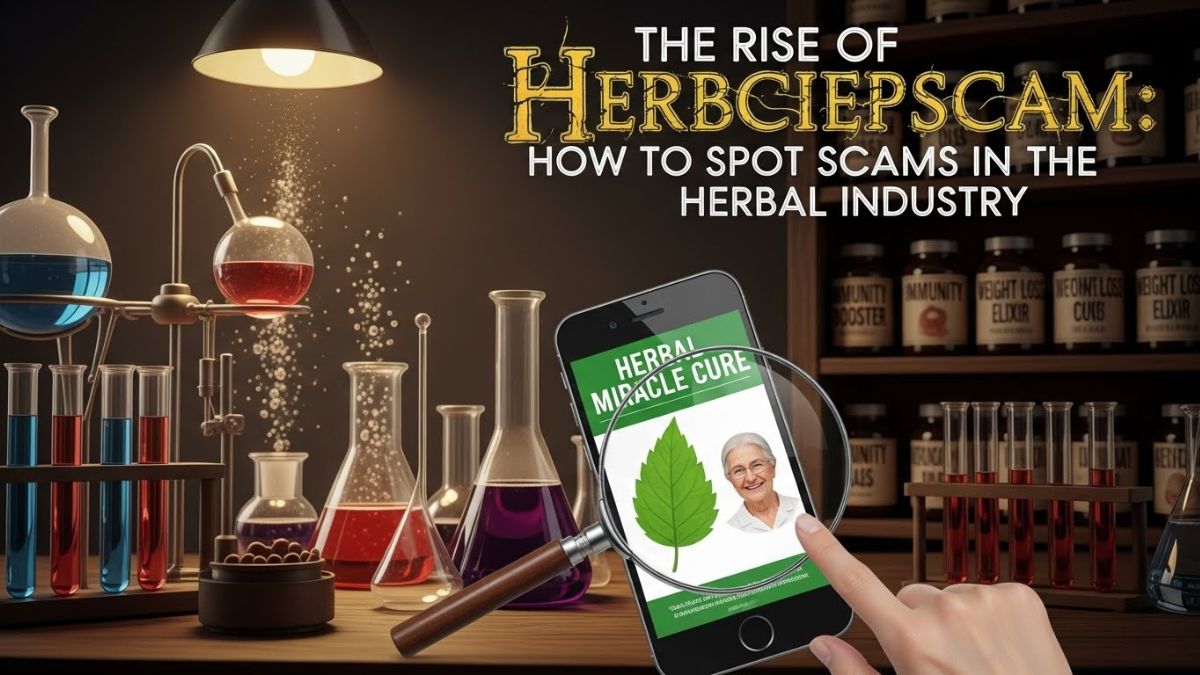HEALTH
From Lab to Patient: The Journey of Medical Discoveries

The journey from laboratory experiments to actual patient healthcare solutions is a narrative marked by scientific breakthroughs and unwavering human resolve. The medical discovery process is a path lined with challenges and innovations, requiring meticulous research and collaboration across multiple disciplines. At the heart of this journey lies a critical step: clinical trials. These trials are essential for verifying the safety and efficacy of new therapies and, for those involved, offering a unique opportunity to participate in clinical trials. This participation advances medical science and provides direct access to pioneering treatments that may significantly impact patient lives.
The transition from theoretical research to widely used medical products is often complex and lengthy, demanding years—or even decades—of diligent work. Researchers must balance many factors, including regulatory hurdles, financial constraints, and scalability challenges. Despite these obstacles, the potential rewards of successful medical discoveries, including improved health outcomes and extended lifespans, make this arduous process undeniably worthwhile.
The Role of Research and Development
Research and development are the lifeblood of any new medical discovery. This phase involves deep probing into the mechanisms of diseases and exploring new biological pathways that therapeutic interventions could target. As highlighted by NIH Research Matters, basic research is crucial in uncovering these pathways, forming the bedrock on which new treatments are developed. A detailed understanding of a disease’s molecular and cellular underpinnings guides the creation of targeted therapies and reduces the likelihood of unforeseen adverse effects during later stages.
However, this stage is fraught with challenges. Initial hypotheses might prove incorrect, and early-stage compounds may not always translate into effective treatments. The iterative process of R&D requires constant refining and testing of ideas, often requiring collaboration across scientific disciplines to integrate diverse insights and technologies.
Clinical Trials and Their Significance
Clinical trials are the backbone of the medical discovery process, providing the evidence needed to make informed decisions about new therapies. These trials are meticulously designed to evaluate the safety and efficacy of treatments in human subjects. They are typically conducted in multiple phases, each building upon the findings of the previous one. For instance, Phase I focuses on safety and tolerability in a small group, while Phase II evaluates efficacy and side effects in a larger pool. Finally, Phase III trials confirm effectiveness on an even broader scale, often preceding regulatory approval.
The data generated from clinical trials guide healthcare policies and ensure that new treatments provide real benefits without imposing unacceptable risks. By adhering to stringent protocols and ethical standards, clinical trials maintain their role as a trusted source of evidence in medicine. The insights gained from rigorous trials continue to shape healthcare, resulting in safer, more effective patient care worldwide.
Ethical Considerations in Medical Testing
Ethical considerations in medical research are paramount, safeguarding the dignity and rights of participants. Ethical questions arise as trials involve human subjects, necessitating clear guidelines and oversight. Principles such as informed consent—ensuring participants understand the risks and benefits before joining a study—are essential. The ethical framework developed by organizations like the World Medical Association is instrumental in shaping how medical research respects human rights and maintains public trust.
Ethical guidelines ensure that the pursuit of science does not come at the expense of individual safety. Continuous oversight by institutional review boards (IRBs) helps enforce these guidelines, ensuring trials are conducted responsibly. Researchers must also balance a study’s potential benefits against its risks, always prioritizing participant welfare.
Innovations Driving the Industry Forward
The role of innovation in driving the medical discovery process forward cannot be overstated. Technological advancements such as artificial intelligence, big data analytics, and genomic sequencing have revolutionized how researchers approach medical problems. These tools allow for processing vast amounts of data in minimal time, identifying patterns and insights that might be invisible through traditional analysis methods.
For example, AI algorithms can predict which compounds are most likely to succeed in clinical trials, reducing the time and costs associated with drug development in the early stages. Simultaneously, genomic sequencing enables precision medicine, tailoring treatments to individual genetic profiles for extraordinary personalized care. Together, these innovations promise incremental improvements and potentially transformative changes to the field.
Patient Perspective and Involvement
Including the patient perspective in medical research is increasingly recognized as a vital component of the discovery process. By involving patients and public representatives, researchers can ensure that the questions addressed and solutions designed align with the needs and preferences of those directly affected. This collaborative approach has been shown to improve the relevance and impact of research outcomes.
Patient advocacy groups are often instrumental in this process, providing insights into patient experiences and fostering a shared purpose with researchers. Such collaboration also enhances research transparency, building trust between the medical community and the public. It empowers patients as active participants in their healthcare journeys, making them central to developing more effective and patient-centric treatments.
Future Trends in Medical Research
The future of medical research holds immense promise as technological advancements continue to break new ground. Among the most exciting developments is CRISPR gene editing technology, which allows researchers to alter DNA with unprecedented precision, opening the door to curing genetic disorders previously thought untreatable. Moreover, integrating digital health tools transforms how we monitor and manage health, enabling continuous, real-time data collection that supports more informed and timely healthcare decisions.
As these trends gain momentum, they signify a shift towards more proactive and preventive healthcare strategies. The combination of advanced analytics, personalized medicine, and telemedicine capabilities can redefine healthcare delivery, improving outcomes on a global scale and fostering an era of more accessible and effective treatments.
Concluding Thoughts on the Journey
The pathway from lab discoveries to patient treatments is an intricate journey that embodies the dedication of countless researchers, scientists, and healthcare professionals. Collaboration is essential to advancing medical science. By adhering to ethical principles and embracing new technologies, the medical community continues to push the boundaries of what is possible, working together to improve human health on a global scale.
The shared vision of creating a healthier, more equitable world drives innovation and progress as we continue this journey. Through perseverance and innovative thinking, the medical community is poised to tackle some of our most pressing health challenges, ensuring that the benefits of new medical discoveries reach those who need them most.
HEALTH
How valgensin Compares to Other Treatments: A Comparative Analysis

Valgensin is making waves in the world of medical treatments, captivating both patients and healthcare professionals alike. As new therapies emerge, many are left wondering: how does valgensin stack up against traditional medications? With a unique approach to treatment, it’s essential to explore what sets valgensin apart. This comparative analysis dives deep into its benefits, potential side effects, effectiveness rates, and real patient experiences. Whether you’re considering a switch or simply curious about this innovative option, let’s unravel the differences together.
Comparison to traditional medications
When examining valgensin, it’s essential to compare it to traditional medications. Many patients have long relied on standard treatments for their health issues. These often come with a host of side effects and varying degrees of effectiveness.
Traditional medications can take time before any noticeable results appear. For some, this leads to frustration and discontinuation of treatment altogether. In contrast, valgensin aims for quicker relief without the prolonged waiting period associated with many conventional drugs.
Additionally, traditional options may require frequent dosing throughout the day. Valgensin offers more flexible administration schedules that fit better into modern lifestyles.
Cost is another factor where valgensin has an edge. While some older medications can be expensive due to ongoing prescriptions or additional therapies needed, valgensin presents a potentially more cost-effective solution over time.
Advantages of valgensin over other treatments
Valgensin stands out in the realm of treatment options due to its unique mechanism. Unlike traditional therapies, it targets specific pathways in the body, offering a more tailored approach. This precision can lead to enhanced outcomes for patients.
One notable advantage is the reduced frequency of administration. Many patients appreciate less frequent dosing schedules compared to daily medications. This convenience often translates into improved adherence and better overall management.
Additionally, valgensin boasts a favorable side effect profile. Many users report fewer adverse reactions than those experienced with conventional treatments, making it an attractive option for sensitive individuals.
Another appealing aspect is its compatibility with other therapies. Patients can integrate valgensin into their existing regimens without significant interactions, allowing for a comprehensive treatment strategy that maximizes benefits while minimizing risks.
Side effects and safety concerns
When considering valgensin, it’s essential to understand its safety profile. Like any medication, it can come with side effects. Common reactions include mild headaches and gastrointestinal disturbances. These are generally short-lived.
Serious adverse events are rare but possible. Patients should remain vigilant for symptoms like unusual fatigue or allergic reactions. Discussing any pre-existing conditions with a healthcare provider is crucial before starting treatment.
Monitoring during the initial phase of using valgensin is important. Regular check-ins can help manage any emerging issues effectively.
Reports suggest that most users tolerate this treatment well, experiencing minimal disruptions in daily life compared to other options available on the market.
It’s always wise to weigh potential risks against benefits when exploring treatments like valgensin, ensuring informed decisions tailored to individual health needs.
Effectiveness and success rates
Valgensin has gained attention for its effectiveness in treating various conditions. Clinical studies indicate promising success rates, often outperforming traditional therapies.
Patients frequently report noticeable improvements in their symptoms within weeks of starting Valgensin. This swift onset can be a game-changer for those seeking relief from chronic issues.
Moreover, the medication appears to maintain its efficacy over time, unlike some alternatives that may lose potency with prolonged use.
Many healthcare providers are increasingly recommending Valgensin, citing strong clinical evidence supporting its benefits.
Patient feedback adds another layer of insight into its performance. Numerous testimonials highlight significant quality-of-life enhancements attributed to the treatment.
These factors contribute to Valgensin’s growing reputation as a reliable option among available treatments today.
Patient experiences and testimonials
Patient experiences with valgensin have been diverse and insightful. Many users report a significant improvement in their condition, noting how this treatment has changed their daily lives.
One patient shared that after starting valgensin, they felt more energetic and engaged in activities they once avoided. The emotional uplift was just as important as the physical benefits for them.
Another individual highlighted the ease of integrating valgensin into their routine. They appreciated not having to deal with complicated dosing schedules or frequent doctor visits.
Testimonials often emphasize the supportive community surrounding valgensin. Patients find comfort in sharing their stories and connecting with others on similar journeys.
The feedback also reflects a sense of empowerment among users, who feel more in control of managing their health challenges through this innovative treatment option.
Conclusion:
The landscape of medical treatments is constantly evolving, and valgensin stands out as a noteworthy option. Its unique mechanism sets it apart from traditional medications, offering patients an innovative choice for managing their conditions.
When comparing valgensin to conventional therapies, its advantages become apparent. Many users report fewer side effects and improved tolerability, making it a more appealing option for those who have struggled with other treatments. Safety remains a top priority, and ongoing studies continue to explore the long-term implications of using this novel therapy.
Effectiveness is crucial in any treatment plan. Valgensin shows promising results that rival established medications while often delivering quicker relief for patients seeking answers to their health challenges. The testimonials shared by individuals who’ve experienced its benefits add a compelling layer to its reputation.
HEALTH
Why SSRIs Don’t Work the Same for Everyone: Genesight Helps Find Out

Today, SSRIs are among the most commonly prescribed medications for mental health conditions such as depression, anxiety, PTSD, and even OCD. As well as some other conditions that these medications are known to be able to help with. They are a newer class of antidepressants that has shown to have quite some positive effects, and mild side-effects, so it is no wonder that psychiatrists are relying on them when trying to determine the right course of treatment for their patients.
Now, you may have already heard some amazing stories about how SSRIs helped some people overcome their anxiety and depression symptoms. They help regulate emotional response and mood, as well as our sleep, our appetites, and much, much more. So, clearly, their effects can undoubtedly be amazing, and it is not a surprise that a lot of people are reporting great things after taking them.
Yet, apart from that, you may have also heard some people claiming that they didn’t get the effects they have been expecting from SSRIs. That they didn’t get much help, and that they have possibly experienced nothing but some side-effects. So, now you’re wondering how it is possible that these medications don’t work the same for everyone, and why it is that we can all have such different experiences with them.
Well, that is an important question right there. What we are going to do now, thus, is answer it for you, hoping to clearly explain why those differences are normal, while also letting you know how you may be able to check in advance what kinds of effects you could expect if your doctor prescribed these medications to you. If you’ve come across Genesight or similar professionals already, then you know that leaving things up to chance is not always necessary, as there are methods for checking this in advance. More on that later, though.
In short, we’re talking about genetic risk factors, and you can read more about that here: https://www.nature.com/articles/s43856-021-00046-8
Why SSRIs Don’t Work the Same for Everyone
Okay, let us now answer the first important question for you right here. To put things simply, you want to know why it is that you are hearing different stories regarding SSRIs from different people. Simply saying that this is normal and moving on with it probably doesn’t cut it. In other words, you want to know why these mediations don’t work the same for everyone, and we are now going to discuss precisely that.
One of the biggest reasons to be aware of here is the fact that our bodies process medications at different speeds, and that is due to some genetic differences in our metabolism. So, you may metabolize the drug more slowly or more quickly than someone else, which leads to having different experiences with SSRIs. Even when you are taking the same drug as someone else and the same dose.

Now, as you probably already know, SSRIs work by blocking the serotonin transporter, which is basically a protein that reabsorbs serotonin in the brain. And, well, there are some genetic transporter variations that can affect how strongly the SSRIs will be able to bind, how quickly the symptoms will respond to the drug, how well serotonin signaling will improve in general, as well as what kinds of side-effects you could wind up experiencing. This is another reason why these medications can work perfectly for some people, while not working that well for others.
Of course, the differences in serotonin receptors can have similar effects here. Basically, genetic differences in those receptors can affect the actual effectiveness of SSRIs, as well as how quickly they will lead to improvements, and, once again, whether some side effects will emerge. In short, the unique receptor profile of your brain is sure to affect your response to these medications.
We also cannot fail to mention that some co-occurring conditions can also play a part here. For instance, if you’re fighting depression, you may also be struggling with anxiety, PTSD, chronic pain or other things, and all of those things will impact how your brain responds to SSRIs. And, in the end, your lifestyle and the environmental factors can affect the response as well.
How Genetics Can Be Helpful in Finding Out What to Expect
Now, you often can’t change the environmental factors. What you can do when you get prescribed an FDA Approved SSRI for Depression, for example, is take some genetic tests to try and determine how you would respond. This is often done before being prescribed a specific drug, as it helps professionals understand your unique profile and thus find the best medication for you.
That is, as you may have guessed it, where Genesight and similar providers come in. Allowing you to do the genetic testing and thus get valuable clues about how your body will respond to certain SSRIs. These tests are rather valuable for clinicians, as well as for patients, because they can help find the best medication quickly.
HEALTH
The Rise of herbciepscam: How to Spot Scams in the Herbal Industry

The herbal industry has exploded in popularity over the past few years, with people turning to natural remedies for everything from stress relief to immune support. Amid this growing interest, however, lies a darker side: herbciepscam. As consumers seek out the benefits of herbal products, they also become targets for fraudulent operations that prey on their desires for wellness and healing.
With the promise of miraculous cures and transformative health benefits, it’s easy to get swept up by flashy marketing tactics. But not all products are created equal; some may even be harmful or ineffective. Understanding how to navigate this complex landscape is crucial for anyone looking to enhance their well-being through herbs.
This blog will delve into the common scams plaguing the herbal industry and arm you with knowledge on how to spot red flags before spending your hard-earned money. By becoming informed buyers, we can collectively push back against deceptive practices and ensure that our journey toward better health is safe and rewarding.
Common Scams in the Herbal Industry
The herbal industry has seen an explosion in popularity, but this growth has also paved the way for various scams. One of the most common traps involves exaggerated health claims. Some products promise miraculous cures without scientific backing.
Another red flag is false endorsements. Many companies rely on fake testimonials or celebrity influencers who have never used their products. This tactic can mislead consumers into thinking they’re buying something reputable.
Counterfeit herbs are a persistent issue as well. Unscrupulous sellers often substitute lower-quality ingredients while charging top-dollar prices.
Subscription models that lock customers into continuous payments without clear terms are becoming increasingly prevalent too. It’s always wise to read the fine print before committing to any recurring charges.
Misleading packaging and branding can create confusion about what you’re actually purchasing, making it crucial to stay informed and vigilant when choosing herbal products.
How to Spot a Scam Product or Company
When navigating the herbal industry, vigilance is crucial. One of the first red flags is overly bold claims. If a product promises miraculous results without any scientific backing, proceed with caution.
Check for transparency in ingredients and sourcing. Reputable companies provide clear details about what’s inside their products and where those ingredients come from.
Look at customer reviews but be discerning. Fake testimonials are common in the herbal market, often found on websites that lack credibility. Seek out unbiased platforms for feedback.
Verify certifications as well. Legitimate companies often display third-party testing results or certifications from recognized health organizations.
Trust your instincts. If something feels off—whether it’s an unprofessional website or pressure tactics to buy—it’s wise to step back and reconsider before making a purchase decision.
Tips for Avoiding Herbicepscam
Be vigilant when purchasing herbal products. Always check for third-party testing. Reputable companies usually provide lab results to verify the quality of their offerings.
Research the brand thoroughly before buying anything. Look for customer reviews and testimonials that highlight genuine experiences. A quick online search can reveal a lot about a company’s reputation.
Avoid deals that seem too good to be true. If an offer promises miraculous results or significant savings, it may be worth steering clear.
Pay attention to labels and ingredients lists. Authentic herbal products should have transparent labeling without vague terms or misleading claims.
Trust your instincts. If something feels off or raises red flags, don’t hesitate to walk away from the deal. Your health is paramount; make informed choices every time you shop in the herbal industry.
The Importance of Research and Education
Research and education are vital in today’s herbal industry. With so many products available, knowing what to look for can set you apart from potential scams.
Understanding the ingredients is key. The more you know about herbs and their benefits, the better decisions you’ll make. Knowledge empowers consumers to recognize authentic products versus those with exaggerated claims.
Moreover, staying informed helps you identify reputable companies. Look for transparent practices, quality certifications, and customer reviews that speak volumes about a brand’s reliability.
Engaging with online communities or reading credible sources also expands your understanding of herbal remedies. This ongoing education fosters critical thinking skills that are essential when evaluating new trends or marketing tactics.
Being knowledgeable not only protects your health but enhances your overall experience within the herbal world.
Conclusion:
The rise of herbciepscam highlights the importance of vigilance in the herbal industry. As consumers become more aware, it’s crucial to remain informed and cautious when choosing products. Always prioritize quality and safety over flashy marketing claims.
Research is your best ally. It empowers you to make sound decisions based on verified information rather than misleading advertisements. Education can help differentiate between genuine products and scams that prey on trust.
-

 GENERAL2 years ago
GENERAL2 years agoDiscovering the Artistic Brilliance of Derpixon: A Deep Dive into their Animation and Illustration
-

 Posts2 years ago
Posts2 years agoSiegel, Cooper & Co.
-

 Lifestyle2 years ago
Lifestyle2 years agoPurenudism.com: Unveiling the Beauty of Naturist Lifestyle
-

 HEALTH2 years ago
HEALTH2 years agoTransformative Health Solutions: Unveiling the Breakthroughs of 10x Health
-

 FASHION2 years ago
FASHION2 years agoThe Many Faces of “λιβαισ”: A Comprehensive Guide to its Symbolism in Different Cultures
-

 Lifestyle2 years ago
Lifestyle2 years agoBaddieHub: Unleashing Confidence and Style in the Ultimate Gathering Spot for the Baddie Lifestyle
-

 Entertainment2 years ago
Entertainment2 years agoGeekzilla Podcast: Navigating the World of Pop Culture, Gaming, and Tech
-

 Lifestyle1 year ago
Lifestyle1 year agoSandra orlow: Unraveling the Story of an Iconic Figure
